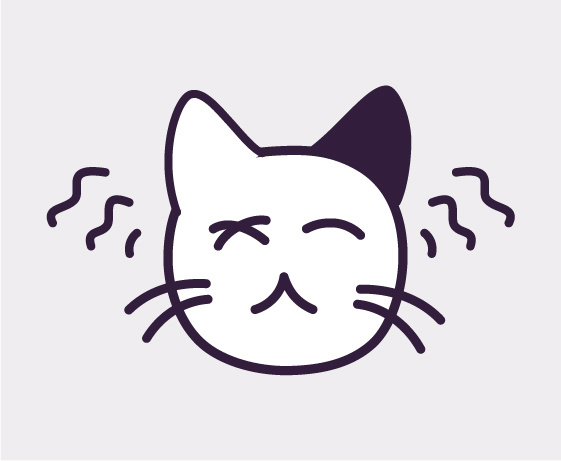Pets are part of our families, but we speak different languages. To help you, we created a pet language investigation method for you to understand your pet better.
For your investigation to create a successful translation and lead to many joyful interactions with your cat, we begin by gathering clues in your cat’s body language.
To dig deeper into the complete process of this investigation, check out our previous blog post on how to investigate pet body language.
Let's begin!
Look for the clues
Every clue is crucial and meaningful in studying the message your pet is sending you.
Cat vocalizations dictionary
Learning about cat vocalizations and sounds
Your cat may use many kinds of vocalizations to express themselves, but each cat uses them according to their personality, situation, and past experiences. Observe your cat and learn their unique language!

Meow
Naturally more predominant sound in kittens to communicate with their mother. When adults, cats don't use meowing with other cats. But they may use it to call for your attention.

Trill, chirp, or chirrup
These are used mainly by female cats to address their kittens and are considered a positive response when used in different situations.

Purr
There is no consent on why cats purr, but it is mainly associated with contentment. However, sometimes a cat may purr when they are anxious or sick, probably as a way to comfort themselves.

Chatter
Is used by your cat in predatory situations, like watching a bird through the window, and it can be interpreted as a sign of excitement.

Caterwauling
Is a sexual call made by female or male cats in the reproductive season to attract a partner.

Snarl or growl
Is a deep tone warning sound for you to stay away when your cat is afraid or insecure and needs some space.

Hiss or spit
Sounds like a whistle that lasts around a second. If the emission of air lasts only a fraction of a second is called a spit. Your cat may do it when they feel the need to defend themselves.

Yowl or howl
Your cat may be distressed if they feel pain, trapped, or threatened. It is a high pitch sound and very high volume when used as a warning and serves to avoid direct conflict between cats.

Scream
This is a sudden, high-pitched sound that your cat emits when they have hurt themselves.
If your cat is a senior, they may suffer from eyesight and hearing loss or mental disease and start expressing distressing sounds out of context. If you notice any pronounced behavior change, take them to the veterinarian for appropriate guidance and treatment.
Don't miss out on the opportunity to check our previous blog post to find more clues:
Cat Tail Dictionary
Cat Eye Dictionary
That’s it! Practice investigating your pet's language every now and then. After a while, most steps will become natural to you! Stay tuned for our next blog post. We'll explore how your cat's body posture can tell you how they’re feeling.

Can't wait to explore the FBI Investigation Method?
You can now access the complete Method in the ebook. Start investigating today!
Thank you for reading!
4EveryPet can only exist thanks to your support. Please share this blog post or buy us a Ko-fi to help keep our content available 4everyone!





